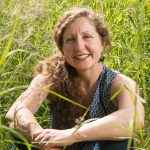Alaska fishermen fight for logging limits
By Marc Heller, originally published on August 22, 2019 at E&E News
More than 100 people who operate commercial fishing boats in southeast Alaska urged the Trump administration not to ease limits on logging in roadless areas of the Tongass National Forest, saying opening those areas could negatively affect salmon.
In a letter sent to Agriculture Secretary Sonny Perdue and Forest Service Chief Vicki Christiansen yesterday, the fishing operators asked officials to delay releasing a draft environmental impact statement on the proposed Alaska roadless rule until October, citing the industry’s busy summer season.
“We depend on the forest, we are important stakeholders, and in the summer we are fully engaged in earning a living. If the comment period occurs during the summer months, we will effectively be precluded from participating,” they said.
In addition, they asked for a roadless rule that “prioritizes protecting and sustaining the Southeast salmon resource and its habitat in perpetuity.” That would include phasing out old growth, clear-cut timber practices, they said.
New Alaska roadless rule threatens Tongass deer
By Marc Heller, Published August 19, 2019 at E&E News
CRAIG, Alaska — A dwindling deer population is about to become a flashpoint in the debate over easing logging restrictions in the nation’s largest national forest.
Conservationists and Alaska Native tribes say deer — a big part of tribes’ diets — are in decline on Prince of Wales Island in the Tongass National Forest due to past timber industry practices. They plan to make that a rallying cry in uniting tribes against the Trump administration’s proposal to ease limits on logging in roadless areas of the national forest.
“Our deer suffer from logging,” said Clinton Cook Sr., president of the Craig Tribal Council, representing a community of about 400 people. Past clear-cutting created open landscapes where trees regenerated so thickly that deer can’t navigate the woods, a condition called stem exclusion that affects as much as million acres of forest around tribal lands, tribal officials said in an interview at their offices.
Trump tariff policies are threatening our efforts to transition the Tongass National Forest away from logging old-growth forests
By Marc Heller, E&E News reporter
Originally published at E&E News on Friday, August 16, 2019
KETCHIKAN, Alaska — The Trump administration’s trade war with China is hitting Alaska’s timber industry where it may hurt most: in the younger trees that everyone seems to agree are the future of the business.
China’s 20% tariff on U.S. timber is retaliation for similar levies the administration placed on Chinese goods. And while Chinese officials spoke earlier this week of trying to reach a middle ground in the broader trade battle, people close to the timber industry in southeast Alaska say they’re not sure the region’s mills that ship there can quickly recover when the battle settles.
That could throw off plans to transition out of old-growth timber harvesting in the Tongass National Forest, a practice that’s unpopular with conservation and environmental groups, as well as Alaska Native tribes, but maintains support from the state’s political leaders.
Trump’s trade war tests Alaska’s struggling timber industry
By Marc Heller, originally published Friday, August 16, 2019 at E&E News
KETCHIKAN, Alaska — The Trump administration’s trade war with China is hitting Alaska’s timber industry where it may hurt most: in the younger trees that everyone seems to agree are the future of the business.
China’s 20% tariff on U.S. timber is retaliation for similar levies the administration placed on Chinese goods. And while Chinese officials spoke earlier this week of trying to reach a middle ground in the broader trade battle, people close to the timber industry in southeast Alaska say they’re not sure the region’s mills that ship there can quickly recover when the battle settles.
That could throw off plans to transition out of old-growth timber harvesting in the Tongass National Forest, a practice that’s unpopular with conservation and environmental groups, as well as Alaska Native tribes, but maintains support from the state’s political leaders.
Conservationists promote the Tongass as bulwark against climate change
Conservationist Dominick DellaSala asks can the Tongass save Alaska?
By Peter Segall, Originally published Friday, August 16, 2019 at The Juneau Empire
Can the Tongass save Alaska from climate chaos?
Dr. Dominick DellaSala, president and chief scientist at the Geos Institute in Ashland, Oregon, asked that question to the small audience of about two dozen gathered in the Mendenhall Valley Library Tuesday evening.
He speaking at at an event hosted by the Southeast Alaska Conservation Council about the role that old-growth forest like the Tongass National Forest can play in combating climate change.
Temperate rain forests like the Tongass soak up an incredible amount of carbon and play a pivotal role in keeping the planet’s temperature at sustainable levels. In answer to his own question, DellaSala said that the Tongass can play a part in saving Alaska from climate chaos, so long as it continues to exist in its present state.
That may be a problem as the Alaska’s logging industry is eager to get at the hundreds of thousands of acres of old-growth forest in Southeast. “Old-growth” forests are not simply forests with old trees, but forests with a complex array of features which create a unique ecosystem which have remained mostly undisturbed by humans.
These Alaska Natives want to upend Trump’s pro-timber rule
Marc Heller, E&E News reporter
Originally published at E&E News Greenwire, Wednesday, August 14, 2019
KAKE, Alaska — To the 569 residents of this island community in the Tongass National Forest, picking blueberries may offer more promise in the long run than harvesting trees.
So when the Department of Agriculture announced last year that it would consider scrapping rules that protect stands of old-growth forest, they demanded meetings with the agency.
“We said we wanted to be consulted,” said Mike Jackson, a leader with the Organized Village of Kake (OVK), in the tribal offices adorned with Native carvings and paintings. The OVK is a federally recognized tribe and has lived here, 100 miles southeast of Juneau, for generations. The Alaska Natives have seen the forests cut over in decades past.
“This is a huge decision to be making,” he said. “They’re just rolling with it.”
The tension between the Organized Village of Kake and USDA is part of a broader negative reaction in southeast Alaska to the department’s proposal to rewrite rules that protect roadless areas of the Tongass from timber harvest.
Proposed Tongass change could speed young-growth transition
By Marc Heller, E&E News reporter, Originally published at E&E News on July 26, 2019
The Forest Service is proposing to open an additional 1,144 acres of the Tongass National Forest to harvesting of young-growth timber, opening a debate about where the transition away from old-growth timber should be focused.
In a proposed amendment to the forest management plan for the Tongass — the nation’s biggest national forest at nearly 17 million acres — the agency said it would allow more harvesting of young growth on a landscape known as moderate-vulnerability karst, which is typically underlain by a soluble rock like limestone.
Moderate-vulnerability karst doesn’t have caves or sinkholes — which are typically found in high-vulnerability karst landscapes — and the Forest Service said those areas can handle management activities such as timber harvesting. In addition, the agency said, regulations have been written in an inconsistent way that would allow cutting of trees in those locations if they were old growth.
“Analysis of old-growth harvest on moderate vulnerability karst has demonstrated that the standards in place were sufficient to maintain the natural processes and productivity of karst lands. This amendment will align the standards for young-growth and old-growth harvest on moderate vulnerability karst,” the Forest Service said in a news release.
Roadless areas are nature’s climate solutions
Pristine areas must protected from relentless development
Originally published May. 29, 2019 8:00 p.m.at the San Francisco Examiner
 The 2018 report of the Intergovernmental Panel on Climate Change, the Alliance of World Scientists, and #Scientists4Future all warn that if we do not transition away from fossil fuels quickly, climate change will threaten civilization itself in the coming decades. Scientists are now saying that pristine areas, like roadless areas and unlogged forests, can buy us time as we transition to a carbon-free economy but only if protected from relentless development.
The 2018 report of the Intergovernmental Panel on Climate Change, the Alliance of World Scientists, and #Scientists4Future all warn that if we do not transition away from fossil fuels quickly, climate change will threaten civilization itself in the coming decades. Scientists are now saying that pristine areas, like roadless areas and unlogged forests, can buy us time as we transition to a carbon-free economy but only if protected from relentless development.
Unfortunately, the fate of millions of acres of roadless areas in Alaska and Utah is now at risk from the Trump administration’s efforts to upend one of the nation’s landmark conservation achievements – the Roadless Area Conservation Rule of 2000. This is coming at a time when we need every wild place to avoid an unprecedent global crisis of 1 million species extinctions, as the authoritative Intergovernmental Science-Policy Platform on Biodiversity and Ecosystem Services recently warned.
Anyone in the Bay Area who cares about wild spaces ought to be alarmed by the pending extinction crisis and the administration’s efforts to usher in clearcut logging and road building in Alaska’s coastal temperate rainforests and Utah’s roadless forests. Here’s why.
Defending America’s ‘Climate Forest’
The Tongass stores hundreds of millions, if not over a billion, tons of carbon, keeping the heat-trapping element out of the atmosphere.
Conservation scientist Dominick DellaSala of the Geos Institute knows all too well the importance of the Tongass for fighting climate change. “If you hug a big tree, you’re actually hugging a big stick of carbon that has been taking up and storing up carbon for centuries,” he says.
Scientists have long understood that logging old-growth forests triggers a cascade of negative effects on wildlife, eroding the biodiversity of places like the Tongass. More recently, DellaSala and research collaborators have shown that old-growth logging worsens climate change.
Click here to read the full article by Rebecca Bowe in the spring 2019 issue of Earthjustice magazine.
Trump’s Great American Forest Liquidation Sale
Published November 20, 2018 (Part one of a series)
By Paul Koberstein and Jessica Applegate
Starting in Alaska’s Tongass National Forest, the Trump administration is proposing to eliminate long-standing rules protecting 50 million acres of ancient forests across the country from logging and roadbuilding, raising new alarms about the president’s disregard for the climate and wildlife.
Taxpayers, already spending billions to keep Alaska’s timber industry afloat, could end up paying even more. If Trump strips roadless protection from the Tongass, no National Forest is safe.
Keep reading at Cascadia Times
Latest News
Stay Updated!
Sign up to stay updated on our current initiatives and receive information you can use to build resilience in your community.

 Samantha Medlock is President of Climate Risk Advisors, helping communities and organizations advance equity, sustainability, and resilience. Her career began chasing floods as a local official in Texas Flash Flood Alley—a hands-on experience that still shapes her approach to climate and disaster risk management.
Samantha Medlock is President of Climate Risk Advisors, helping communities and organizations advance equity, sustainability, and resilience. Her career began chasing floods as a local official in Texas Flash Flood Alley—a hands-on experience that still shapes her approach to climate and disaster risk management.
 Arsum is the Senior Adaptation and Coastal Resilience Specialist for the National Wildlife Federation’s Southcentral Region. In this role, she advances climate adaptation efforts, with a focus on nature-based approaches to address the impacts of climate change and extreme events across the Gulf region. She has authored and co-authored numerous publications on climate impact assessments and adaptation solutions. Additionally, she regularly participates in state-based coastal resilience and hazard mitigation planning across the Gulf, collaborating with regional and local stakeholders.
Arsum is the Senior Adaptation and Coastal Resilience Specialist for the National Wildlife Federation’s Southcentral Region. In this role, she advances climate adaptation efforts, with a focus on nature-based approaches to address the impacts of climate change and extreme events across the Gulf region. She has authored and co-authored numerous publications on climate impact assessments and adaptation solutions. Additionally, she regularly participates in state-based coastal resilience and hazard mitigation planning across the Gulf, collaborating with regional and local stakeholders. Frank is the former President of the Reinsurance Association of America. Frank currently serves on the Advisory Board of the OECD’s International Network for the Financial Management of Large-Scale Disasters, the RAND Center on Catastrophic Risk Management and Compensation, and the University of Cincinnati’s Carl H. Lindner III Center for Insurance and Risk Management Advisory Board.
Frank is the former President of the Reinsurance Association of America. Frank currently serves on the Advisory Board of the OECD’s International Network for the Financial Management of Large-Scale Disasters, the RAND Center on Catastrophic Risk Management and Compensation, and the University of Cincinnati’s Carl H. Lindner III Center for Insurance and Risk Management Advisory Board. Jim is a multilingual world traveler. Based in Bavaria during the 1970s, Jim spent most of this period in India, Afghanistan and Nepal, where he founded and operated a charitable medical clinic serving Tibetan Refugees. He settled in Oregon in 1983 on a forested ranch in the Umpqua National Forest.
Jim is a multilingual world traveler. Based in Bavaria during the 1970s, Jim spent most of this period in India, Afghanistan and Nepal, where he founded and operated a charitable medical clinic serving Tibetan Refugees. He settled in Oregon in 1983 on a forested ranch in the Umpqua National Forest. Dr. Micah Hahn is an Associate Professor of Environmental Health in the Institute for Circumpolar Health Studies at the University of Alaska-Anchorage. She received her joint PhD in Epidemiology / Environment and Resources from the University of Wisconsin-Madison and her MPH in Global Environmental Health from Emory University. Subsequently, she was a postdoctoral fellow for the CDC Climate and Health Program, and in this position worked collaboratively with the CDC Division of Vector-borne Diseases and the National Center for Atmospheric Research. Her research focuses on understanding the health impacts of climate change and working with communities to develop locally-relevant adaptation and resilience-building strategies. Dr. Hahn is also on the Management Team of the Alaska Climate Adaptation Science Center.
Dr. Micah Hahn is an Associate Professor of Environmental Health in the Institute for Circumpolar Health Studies at the University of Alaska-Anchorage. She received her joint PhD in Epidemiology / Environment and Resources from the University of Wisconsin-Madison and her MPH in Global Environmental Health from Emory University. Subsequently, she was a postdoctoral fellow for the CDC Climate and Health Program, and in this position worked collaboratively with the CDC Division of Vector-borne Diseases and the National Center for Atmospheric Research. Her research focuses on understanding the health impacts of climate change and working with communities to develop locally-relevant adaptation and resilience-building strategies. Dr. Hahn is also on the Management Team of the Alaska Climate Adaptation Science Center. Michael is a former Founding Principal of Resilient Cities Catalyst, a global non-profit helping cities and their partners tackle their toughest challenges. He is currently the Executive Director of Climate Resilience Academy at the University of Miami.
Michael is a former Founding Principal of Resilient Cities Catalyst, a global non-profit helping cities and their partners tackle their toughest challenges. He is currently the Executive Director of Climate Resilience Academy at the University of Miami. Dr. Quintus Jett is a consultant, educator, and strategist for public causes. He has a doctorate in Organizations & Management from Stanford University, and a two-decade faculty career which spans schools, departments, and programs of business, engineering, liberal studies, divinity, and public and nonprofit management. Following Hurricane Katrina in 2005, Dr. Jett launched a volunteer project in New Orleans, which enlisted residents, students from over a dozen colleges and universities, and hundreds of others to field map the city’s Gentilly district, Lower Ninth Ward, and New Orleans East. Dr. Jett is an innovator in higher education, bridging the divide between academic research and the other priorities of the modern university, including student access and diversity, community engagement, and providing foundations for life-long learning in today’s rapidly changing world.
Dr. Quintus Jett is a consultant, educator, and strategist for public causes. He has a doctorate in Organizations & Management from Stanford University, and a two-decade faculty career which spans schools, departments, and programs of business, engineering, liberal studies, divinity, and public and nonprofit management. Following Hurricane Katrina in 2005, Dr. Jett launched a volunteer project in New Orleans, which enlisted residents, students from over a dozen colleges and universities, and hundreds of others to field map the city’s Gentilly district, Lower Ninth Ward, and New Orleans East. Dr. Jett is an innovator in higher education, bridging the divide between academic research and the other priorities of the modern university, including student access and diversity, community engagement, and providing foundations for life-long learning in today’s rapidly changing world. Scott is Monfort Professor of Atmospheric Science at Colorado State University. He has written about 100 publications in the peer-reviewed climate literature, is a former editor of the Journal of Climate, and served for five years as founding Science Chair of the North American Carbon Program.
Scott is Monfort Professor of Atmospheric Science at Colorado State University. He has written about 100 publications in the peer-reviewed climate literature, is a former editor of the Journal of Climate, and served for five years as founding Science Chair of the North American Carbon Program. Linda has many years of experience in disaster preparedness and resilience. She has been an elected official on the Linn County Iowa Board of Supervisors, Chair of the Metropolitan Planning Organization, the East Central Iowa Council of Governments, the statewide Mental Health Developmental Disability and the Linn County Board of Health. Langston is a former president of the National Association of Counties (2013-2014).
Linda has many years of experience in disaster preparedness and resilience. She has been an elected official on the Linn County Iowa Board of Supervisors, Chair of the Metropolitan Planning Organization, the East Central Iowa Council of Governments, the statewide Mental Health Developmental Disability and the Linn County Board of Health. Langston is a former president of the National Association of Counties (2013-2014). Ken works with families and organizations as a mediator, organizational consultant, trainer and facilitator. Along with his passion for helping people prepare for and reduce climate change, Ken also volunteers as a mediator through Mediation Works and is passionate about supporting youth through mentoring with Boys to Men of Southern Oregon.
Ken works with families and organizations as a mediator, organizational consultant, trainer and facilitator. Along with his passion for helping people prepare for and reduce climate change, Ken also volunteers as a mediator through Mediation Works and is passionate about supporting youth through mentoring with Boys to Men of Southern Oregon. Matthew is a retired high school teacher who was once honored as Oregon High School Social Studies Teacher of the Year. Before his teaching career he was in the restaurant business in Portland. He is also a lawyer who has been a member of the Oregon State Bar Association since 1980.
Matthew is a retired high school teacher who was once honored as Oregon High School Social Studies Teacher of the Year. Before his teaching career he was in the restaurant business in Portland. He is also a lawyer who has been a member of the Oregon State Bar Association since 1980. Andrea is the Resilience Policy Advisor for the North Carolina Office of Recovery and Resiliency. She works across state agencies and with local governments to increase the state’s resilience to the impacts of climate change.
Andrea is the Resilience Policy Advisor for the North Carolina Office of Recovery and Resiliency. She works across state agencies and with local governments to increase the state’s resilience to the impacts of climate change.